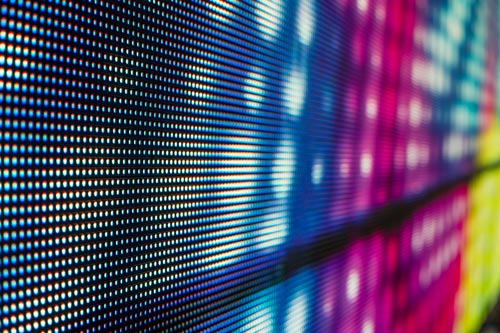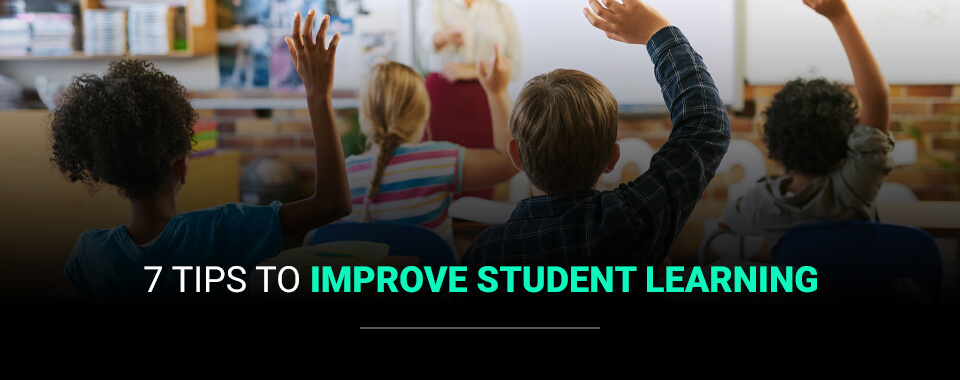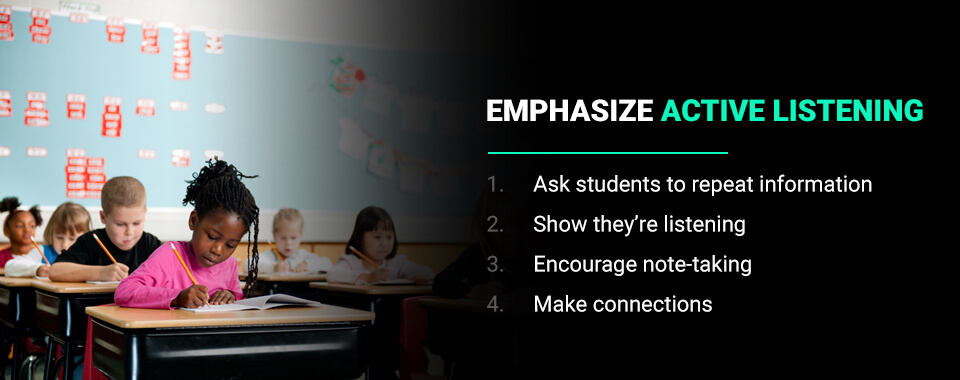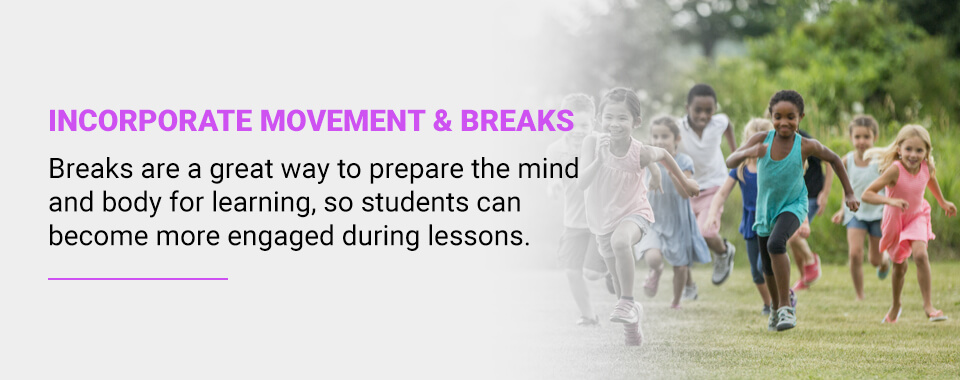

Teachers play an important role in student success and learning. What teachers and schools do daily impacts students for the rest of their lives, providing them with essential knowledge and skills to succeed. Seeing to understand how students learn best in the classroom and researching tips you can implement in your classroom is a great way to determine how to improve students’ performance.
When you want to improve your students’ learning, creating goals can help involve them in their progress and give them steps they can follow to achieve those aspirations. Especially when working on individualized improvement, goals are an excellent way for students and teachers to identify areas of improvement and determine how to accomplish the desired outcome.
Students can use goals to reach different results and apply them where needed to aid their learning journey. From achieving good grades to learning to study better, goals are excellent individualized tools.
Many teachers use SMART goals to guide students toward improvement in the classroom. SMART stands for specific, measurable, achievable, relevant and timely. These principles help students and teachers create achievable goals that give students the details they need to carry out their completion. They can also help provide teachers with a guide for making practical goals to serve their classes and encourage individual improvement.
Teachers can also benefit from making goals. Students can take their learning and improvement into their own hands, but there are many strategies teachers can use to drive an overall improvement in the classroom. Whether trying new teaching methods or giving more individualized care, teaching goals can prepare classes for change and growth.
Teachers can develop deeper levels of learning in their students by encouraging and highlighting active listening in the classroom. This communication method requires students to go beyond hearing what their teachers say to ensure they understand the meaning of the points. When students use active listening, they are more likely to comprehend and recall information later, whether completing homework or a test.
In the classroom, instructors can implement many habits to help spark more active listening in students. Some ways teachers can inspire active learning in the classroom include:

Teachers can ensure students are listening and retaining information by asking them to repeat what they’ve said back to them or paraphrase essential points. This system requires students to reflect on their teacher’s words, helping develop their recall and deepening learning beyond memorization. Repetition can also help teachers assess how much their students internalized so that they can repeat essential points, from assignment instructions to vital facts.
Students can better listen if they are more active in the conversation or lecture. Nodding and other affirmative movements can help students engage in the content, requiring them to mentally check in and assess their understanding and participation. These movements are also essential communication skills, allowing students to better converse with their peers and others in the future. Like paraphrasing, teachers can use nodding and other actions to determine how engaged their students are with the information.
Other actions can help students actively participate in lessons and better retain information. Taking notes can help students paraphrase information without speaking, making it ideal for shy kids or teachers with larger classes. Writing encourages students to stay engaged in lessons and think about what their teachers tell them and how it relates to other lessons. They also have to determine what information they need to write down and what is nonessential, helping them apply critical thinking to studies.
Connections help students relate lessons to what they understand outside the classroom. These learning strategies can help students develop a deeper knowledge of the subject matter, helping them better understand what they’re learning and increase their chances of remembering it when needed. Teachers can use active listening by asking students to make connections throughout the lesson — students will have to pay attention and internalize information to create strong connections.
Active listening can boost student learning and establish strong communication skills they can take outside the classroom. Many teachers use their time with students to give them the essential social skills and work ethic they can apply to higher education and the workforce. Active listening has many applications outside the classroom, but it can help students improve as they learn.
Many aspects of school and learning involve structure to help students focus on education and lessons. They can better prepare for what each class offers when they can move from class to class without thought. Further, structure helps students know what to expect, so they can better control their emotions and manage their energy when in the classroom. Some ways teachers can help maintain structure in their classroom include:
Structure helps students get ready to learn. Whether they need to prepare supplies for the next lesson or wrap up an assignment for the day, structure and schedules let students understand what their day looks like and guide their learning and actions.
While structure in the classroom is essential, teachers can also improve student learning by switching up the formats regularly. Students have to sit for long periods at a time with few breaks between lessons — changing formats and mediums when teaching can help keep students engaged and interested in the materials.
Variety can also ensure all students receive information in a way that makes sense to them. Each child generally falls under three different learning styles — visual, auditory and kinesthetic. Many teachers have a teaching style that usually falls under one learning style, which makes it challenging for other students to learn in the classroom. Changing the formats can engage all students and ensure they receive content in a way that helps them learn best. Some ways to engage the different learning styles include:
Catering to students’ learning preferences can help improve their classroom performance and increase comprehension. Whether they want better grades or to build a stronger foundation for later classes, understanding learning styles and meeting them with different teaching formats can benefit students in several ways.
While classroom structure is essential, teachers can better encourage learning by respecting the students’ natural workflow and energy levels. Younger children especially have lots of energy and often lack the tools to manage it, resulting in disruptions to learning and teaching. On the other hand, high schools overlook recess, leaving older students sitting in classes back to back with little time to move around and get out any energy they might have.

Breaks are a great way to prepare the mind and body for learning, so students can become more engaged during lessons. When students can move around the classroom or other areas, they can prepare their bodies to return to a learning environment and process what they’ve already learned. As teachers work movement and breaks into their classroom, they can take a structured or unstructured approach:
With long learning periods every day, breaks can help students get the rest and movement they need to foster their success. Even the best students need breaks from learning. Teachers that set their classroom rules and lesson schedules allow students to get the care they need to support their learning.
Mindfulness exercises can be an effective structured break option or way to start classes each day. Mindfulness helps focus the mind and allows students to become more present — this type of exercise uses lots of breathing exercises and reflection, which can also reduce stress and let students process their emotions. Some ways teachers can implement mindfulness in the classroom include:
Calming activities like mindfulness are a great way to ready the class after exciting activities, from lunch and recess to assemblies. Students often have difficulty shifting from social activities to learning environments, making learning harder. Mindfulness can help center their thoughts so they are ready to engage in the lesson.
Teachers have many tips and habits they can implement into their classrooms to help their students learn and succeed. Technology can be an excellent addition to the school, expanding teaching options and impacting how students learn. While some people might believe that classroom technology might distract students, there are many benefits to using these tools while teaching.
Some tools teachers can implement in their classroom include:
Many students are visual learners, meaning they need visual cues and resources to optimize their learning. Projectors allow teachers to share visual information with large groups of people, from PowerPoint presentations that aid lectures to videos from experts on different subjects. Visual materials can also help break up verbal content and keep students engaged during long classes.
While lecturing is an excellent way to relay information to students, the internet allows teachers to find many fantastic resources they can share. Quality speakers and sound systems make it possible to share music, podcasts and videos with students so that teachers can expand their learning beyond the classroom.
Paired with projectors, smartboards allow students and teachers to interact with the displayed content. Teachers can write out math problems and solve them in a different color or break down grammar constructions. They can also use the boards to work through concepts for students and see how a student works through problems in real time.
With large classes, it can be challenging to plan demonstrations and ensure that all students can see. Tabletop cameras allow teachers to connect to projectors and share presentations with the whole class, even those who sit in the back. Teachers can conduct more science experiments or show art techniques in a new way that keeps all students engaged and interested in the lesson.
Technology can help provide new ways to reach students. Content allows teachers to keep students engaged throughout lessons, creating breaks in the usual teaching style. With the right classroom tech, teachers can continue offering students the best education. Having the right technology can also be helpful when working with online learning.
When determining how to improve learning, schools and teachers have many options. Technology is an excellent investment for schools that allows you to connect your students and teachers with the best things on the market. With technology, teachers can work on other improvement techniques, like teaching in various formats and practicing mindfulness. The versatility of classroom technology allows teachers to use their tools to best support their students.
At Illuminated Integration, we specialize in custom audio, video and lighting (AVL) solutions. We work with you at every step of the process to create an individualized product that best suits your school or classroom, regardless of the project scope or complexity. With experience working with schools, you can trust that we will understand what your sector needs.
Contact Illuminated Integration today to discover how we can transform your school with quality AVL solutions.